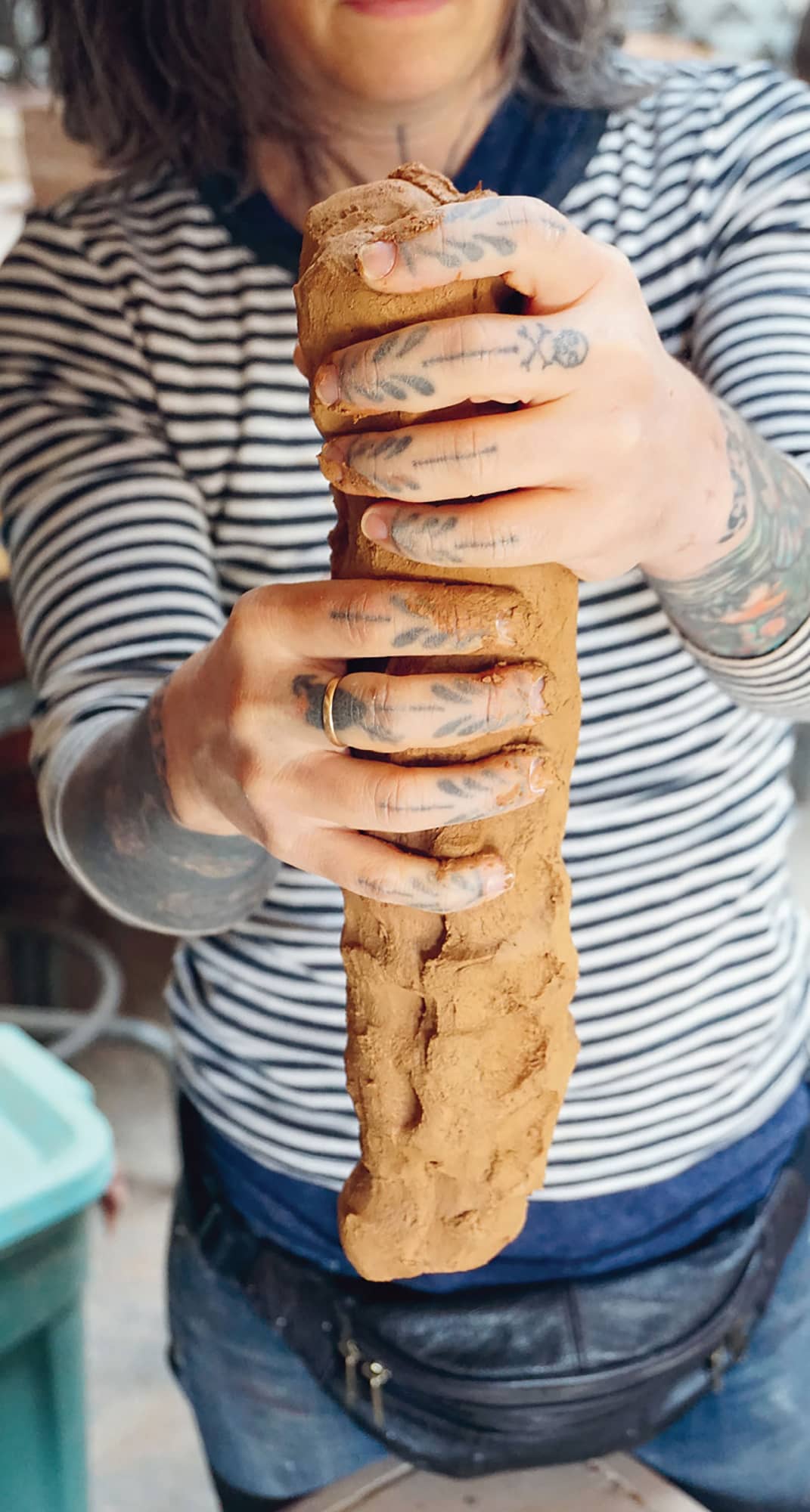Vocabulary

BISQUE | Pots that have been fired to a low temperature, typically 06-04. This dries the pots so they can easily be handled for glazing but are still porous for glaze absorption.
GREENWARE | Refers to unfired pottery.
LEATHER-HARD | The clay has dried to a point where it is visibly damp. It looks dark and feels cool. It is dry enough to trim feet, add handles, and carve into. If you press your finger into it, it shouldn’t leave an indention. It will hold its form when handled but will move if squeezed.
SOFT LEATHER-HARD | I refer to pots as a soft leather-hard when they are on the wetter side of leather-hard. You can handle the pot but must be more gentle. If pushed into with a finger, it will leave an indention.
FIRM LEATHER-HARD | I refer to pots as firm leather-hard when they are on the drier side of leather-hard. It is too late to add handles without risk of cracking. Trimming a foot is possible, but not ideal. This stage can be good for carving if you like to use more pressure. Pots are best slipped at this stage.
RECLAIM | This refers to all the old dried clay scraps that are rehydrated with water and mixed. This clay can be used again to make pots.
SCORE AND SLIP | This is the method for attaching two pieces of clay. Scratch the surface where an attachment will go, as well as the attachment, then add the slip on the scratched part and the attachment. Press and smooth the new piece into place.
SLIP | A liquid clay used for decoration or adding color, layers, and texture to a pot.
WAX RESIST | A technique using wax to resist glaze to decorate.
YUNOMI | A Japanese style of teacup in which the cup is taller than it is wide, with a trimmed foot.